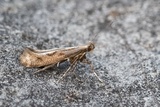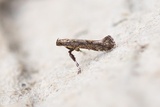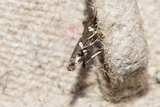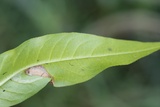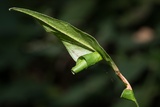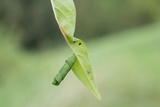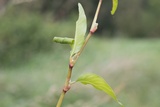Calybites phasianipennella (Hübner, 1813) Species
Last modified: Dec. 14, 2024, 11:51 a.m.
A fairly common species in Belgium.
Details
- Classification
- Family: Gracillariidae > Subfamily: Gracillariinae > Tribus: Gracillariini > Genus: Calybites > Species: Calybites phasianipennella
- Vernacular names
- Viervleksteltmot (NL), Little slender (EN), Knöterich-Stelzenmotte (DE)
- First mention in Belgium
- De Fré Ch. 1858. Catalogue des Microlépidoptères de la Belgique. — Annales de la Société entomologique belge 2: 45–162. On page 146 (as G.[racillaria] Phasianipennella H.). view page
- Status
-
Native
Distribution
Caterpillar
The larva first lives in a small, hard to observe gallery at the underside of the leaf which is later enlarged into a small, transparant blotch mine.
Mine
At first in a small transparent blotch mine at the underside of the leaf in which the frass is concentrated at one side of the mine. The full-grown instar turns the tip of a leaf into a roll.
See also gracillariidae.net and bladmineerders.be.
Cocoon/pupa
A whitish silken cocoon.
Bionomics
At first a small gallery, then a whithish blotch and later on a leaf roll, made by cutting part of a leaf and rolling that part up and spinning it to the leaf.
Pupation takes place in the leaf roll where the larva first spins a whitish silken cocoon.
The species hibernates in the adult stage. The adults come to light.
Flight periods
The moths fly from August till early June in one generation per year.
Observed on
- Host plant (species):
- Polygonum hydropiper, Persicaria maculosa, Rumex acetosa, Rumex acetosella, Rumex hydrolapathum, Lysimachia vulgaris and
The larvae feed on: Polygonum, Rumex or Lysimachia. Also other plants can be chosen but much less frequently.
Habitat
The species prefers rather wet habitats where the foodplants grow, like meadows, river banks, etc.
